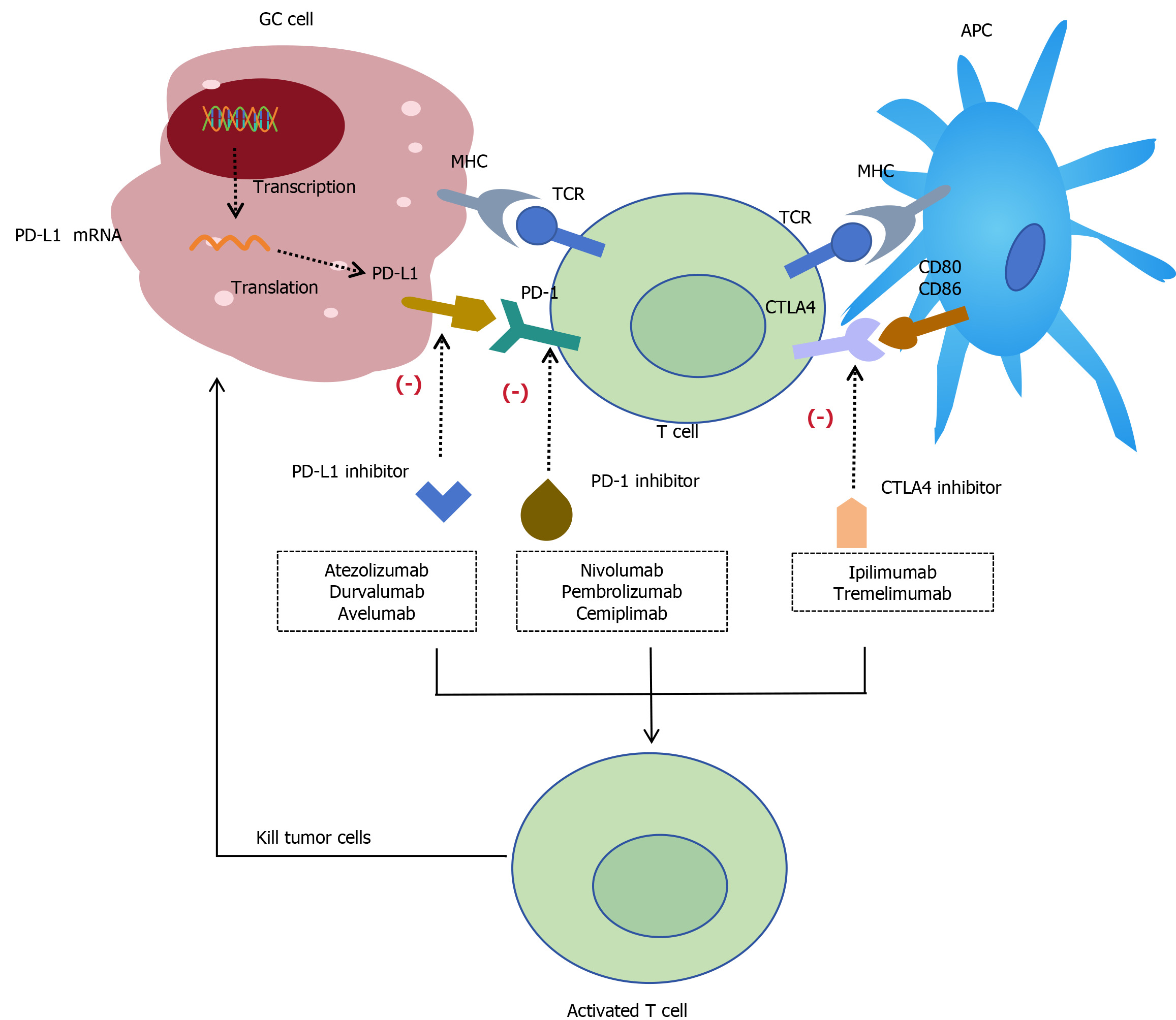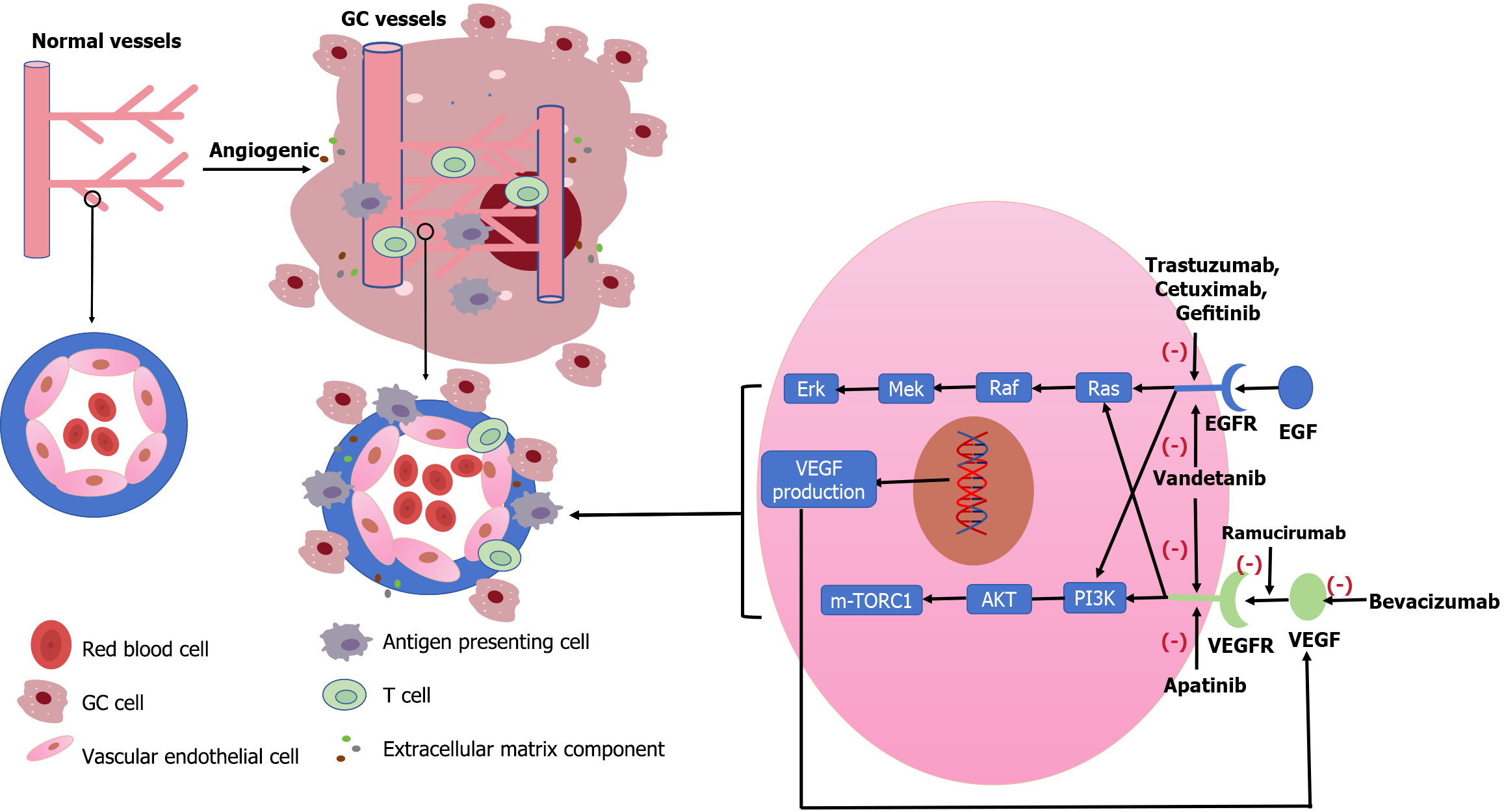Copyright
©The Author(s) 2025.
World J Gastrointest Oncol. Aug 15, 2025; 17(8): 109613
Published online Aug 15, 2025. doi: 10.4251/wjgo.v17.i8.109613
Published online Aug 15, 2025. doi: 10.4251/wjgo.v17.i8.109613
Figure 1 Mechanism of immune checkpoint inhibitors.
Blocking programmed death 1, programmed death ligand 1, and cytotoxic T lymphocyte-associated protein 4 can activate T cells, leading to the death of tumor cells. APC: Antigen-presenting cell; CTLA-4: Cytotoxic T lymphocyte-associated protein 4; GC: Gastric cancer; MHC: Major histocompatibility complex; PD-1: Programmed death 1; PD-L1: Programmed death ligand 1; TCR: T cell receptor.
Figure 2 The mechanism of epidermal growth factor receptor/ vascular endothelial growth factor receptor inhibitors.
The activation of epidermal growth factor receptor (EGFR) in tumor cells triggers the phosphorylation of tyrosine residues within the receptor kinase domain and activates the Ras/Raf/mitogen-activated protein kinases (MAPK) or phosphatidylinositol 3-kinase/protein kinase B/mechanistic target of rapamycin pathways, leading to angiogenesis, cell proliferation, growth, and metastasis. The activation of vascular endothelial growth factor receptor (VEGFR) in endothelial cells can also inhibit tumor growth through the Ras/Raf/MAPK pathway. Anti-EGFR/anti-VEGFR can block these signaling pathways, preventing angiogenesis and inhibiting tumor growth. AKT: Protein kinase B; EGF: Epidermal growth factor; EGFR: Epidermal growth factor receptor; GC: Gastric cancer; M-TOR: Mechanistic target of rapamycin; PI3K: Phosphatidylinositol 3-kinase; VEGF: Vascular endothelial growth factor; VEGFR: Vascular endothelial growth factor receptor.
- Citation: Wan JY, Zhang D, Wu XH, Yang H, Dong C. Progress of immune checkpoint inhibitors in gastric cancer. World J Gastrointest Oncol 2025; 17(8): 109613
- URL: https://www.wjgnet.com/1948-5204/full/v17/i8/109613.htm
- DOI: https://dx.doi.org/10.4251/wjgo.v17.i8.109613










